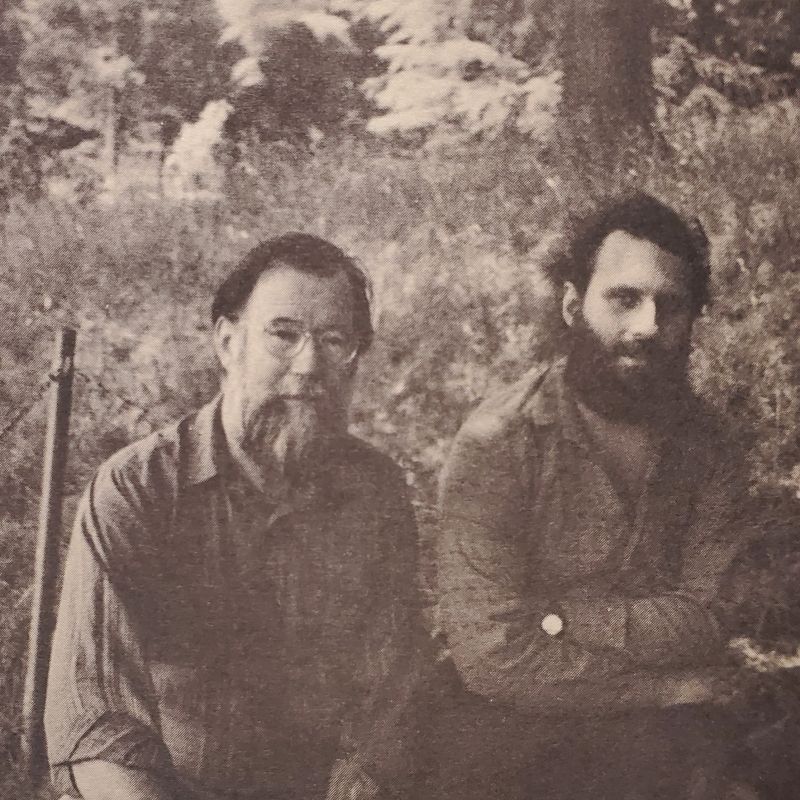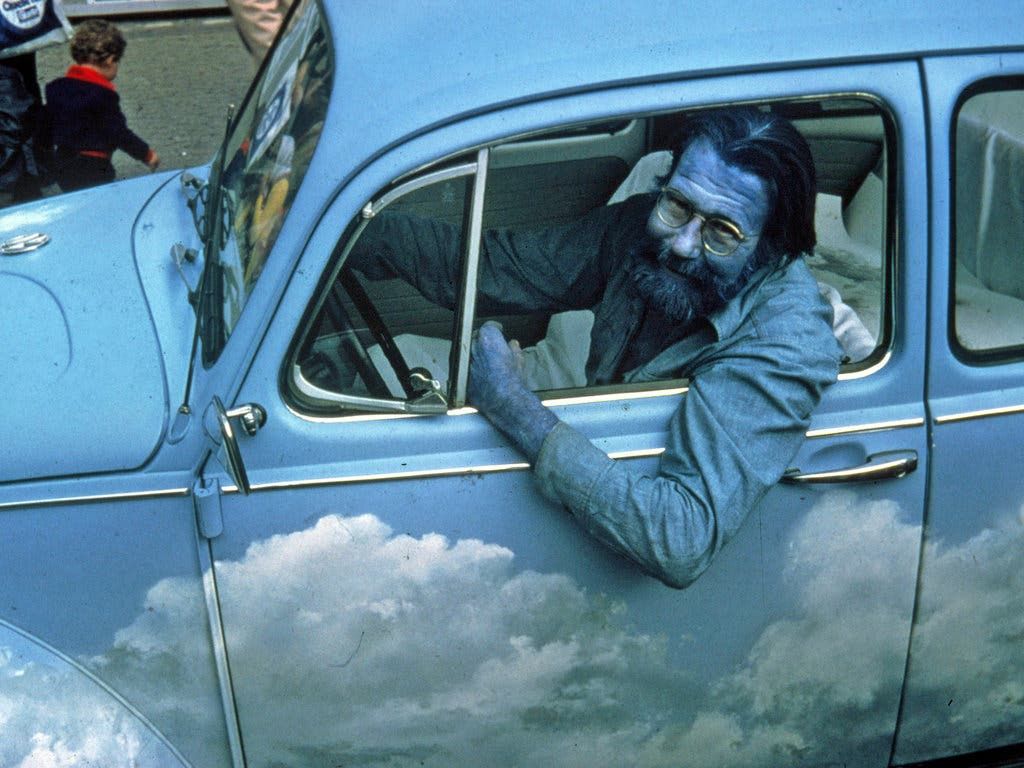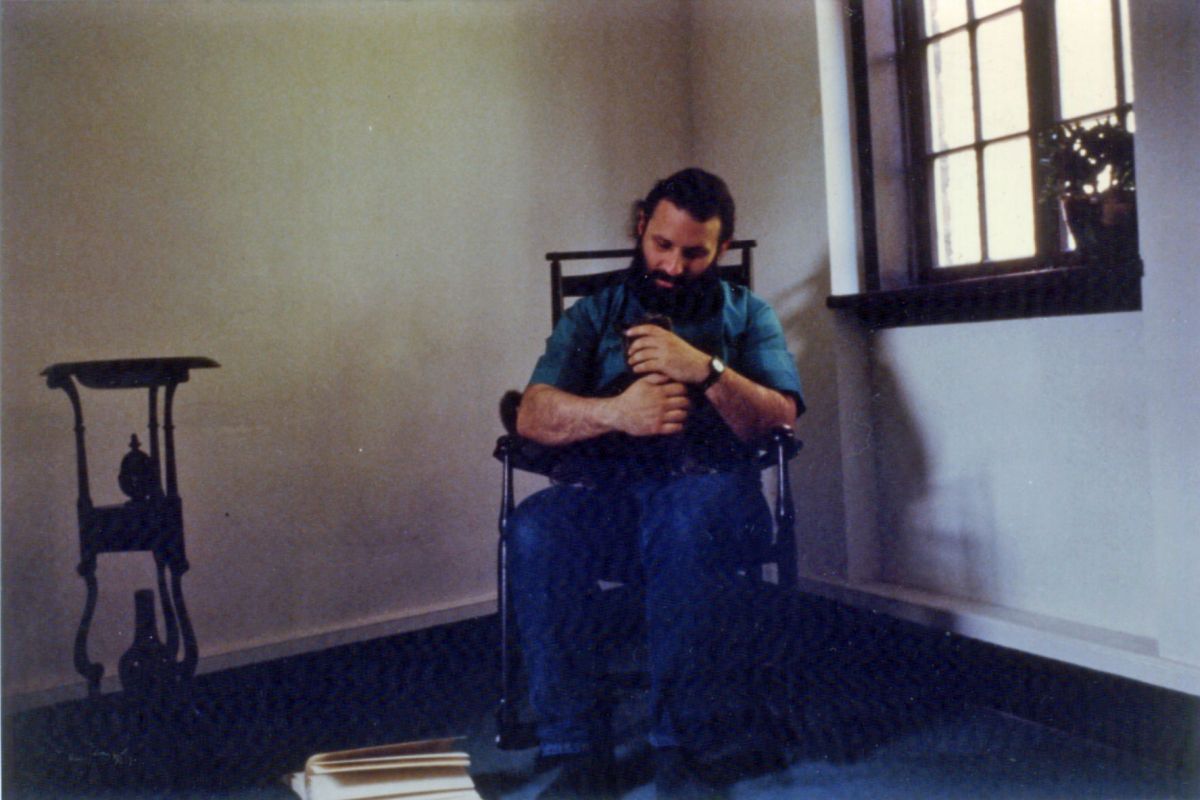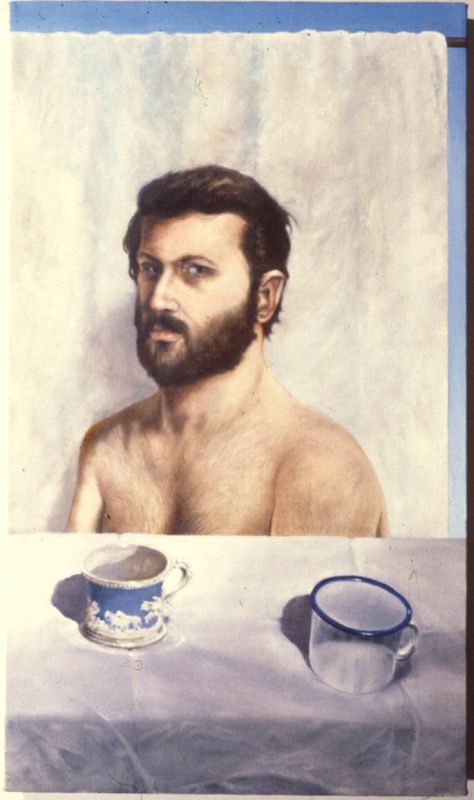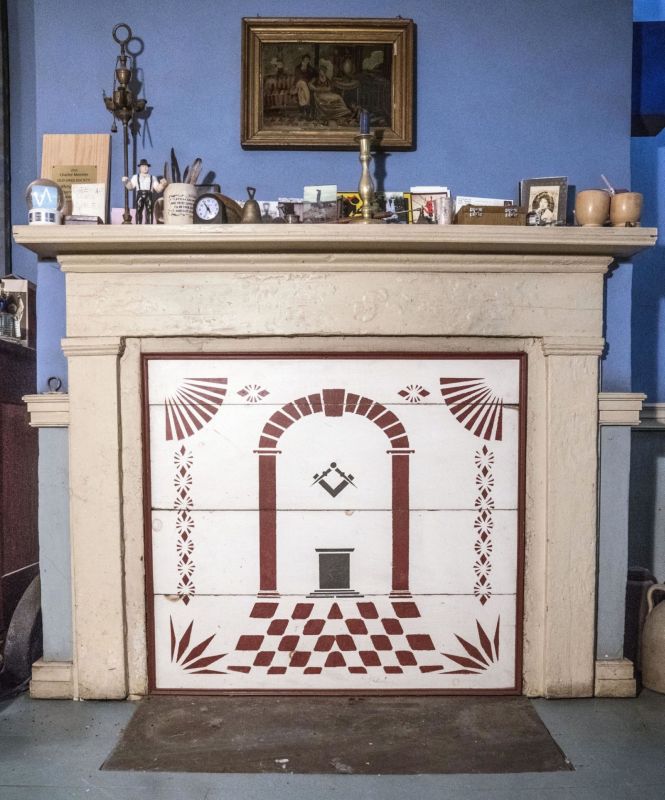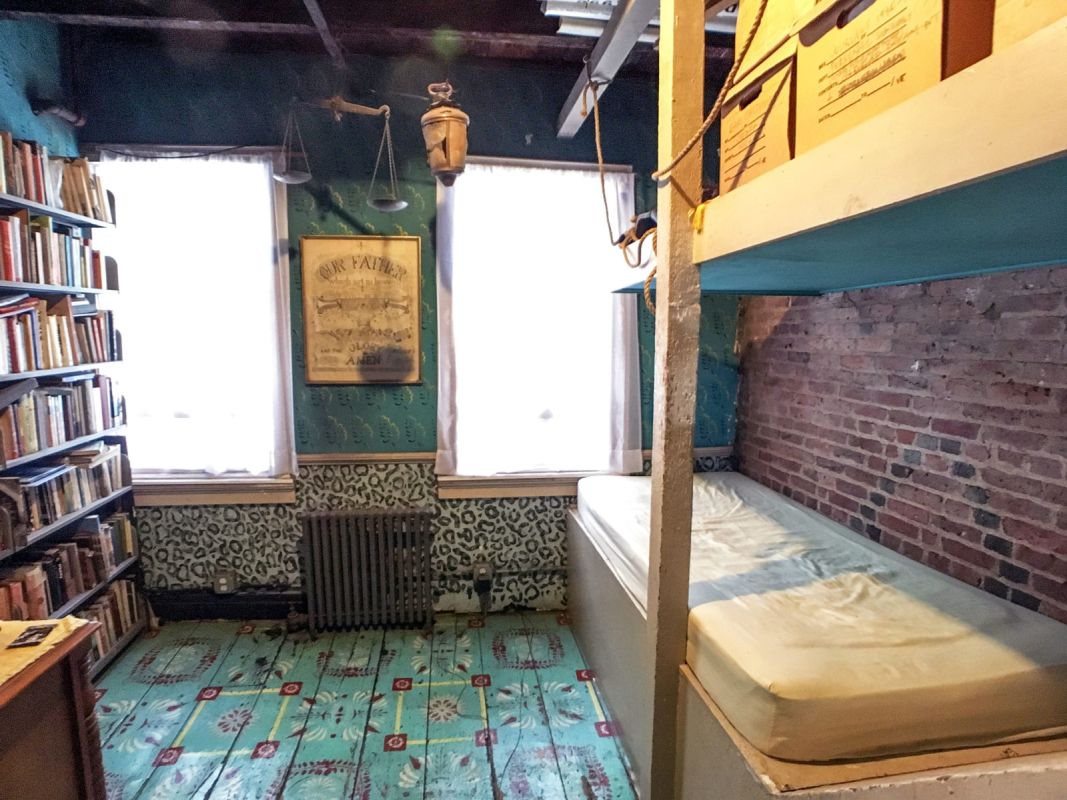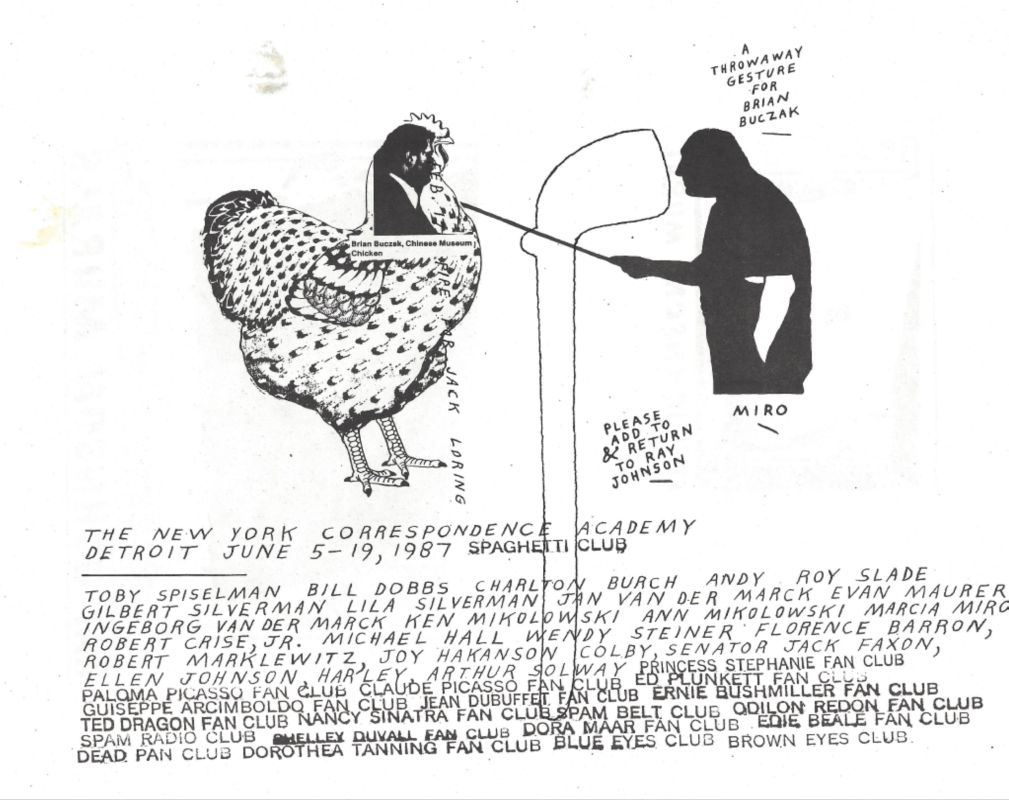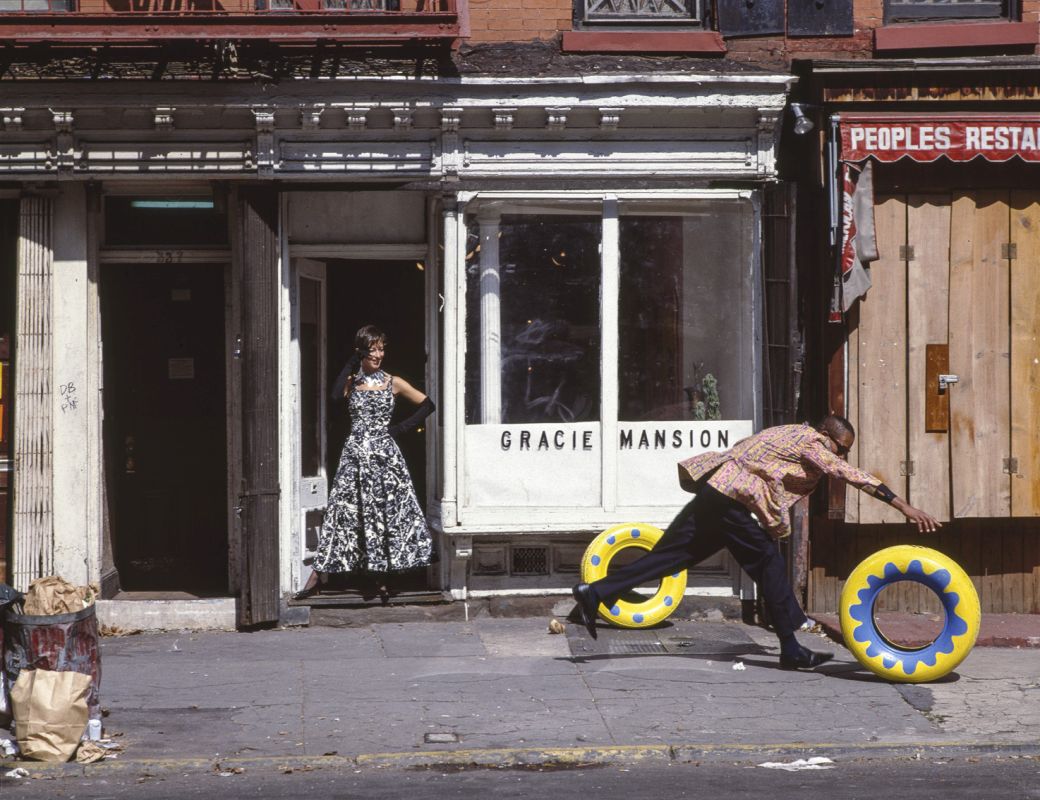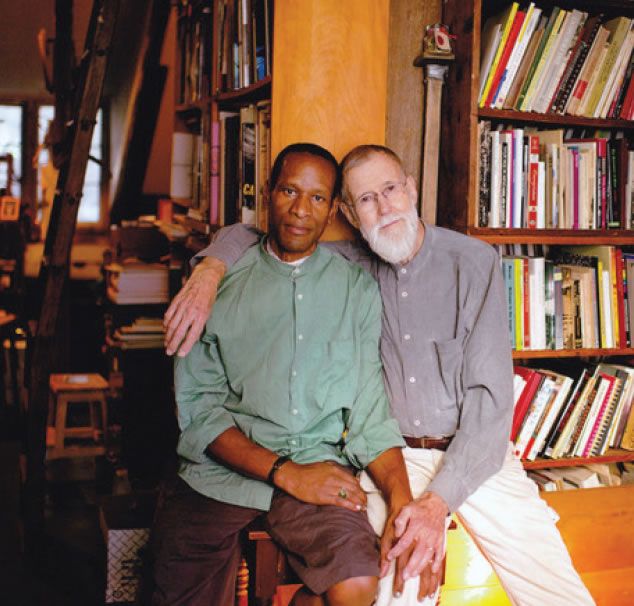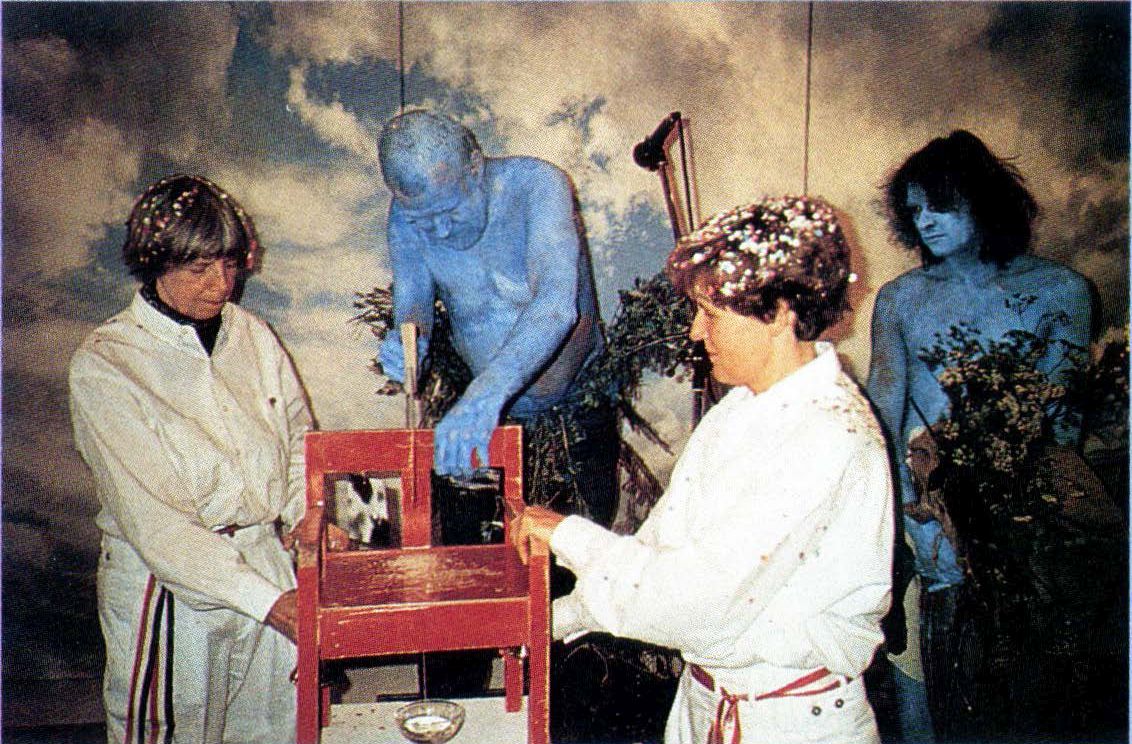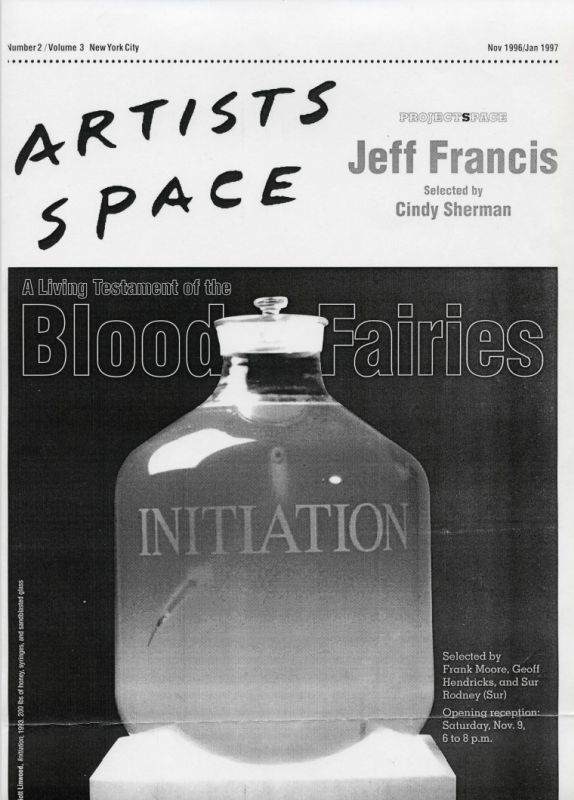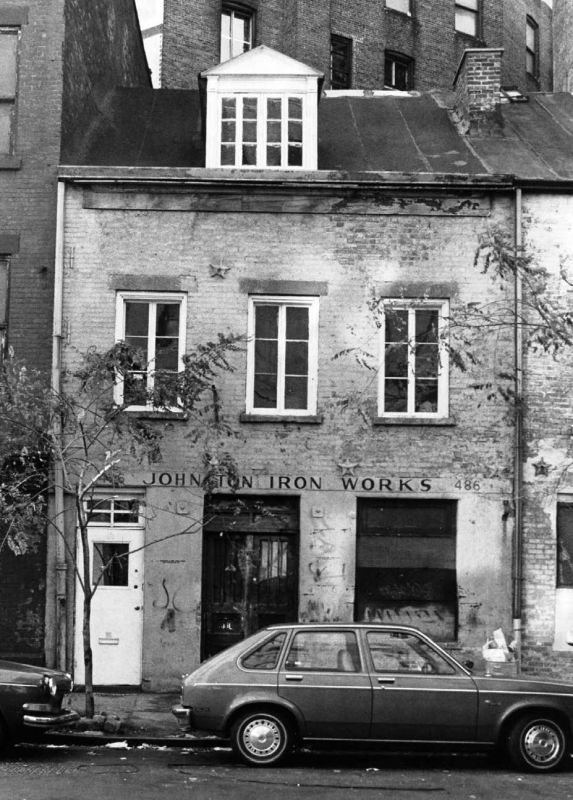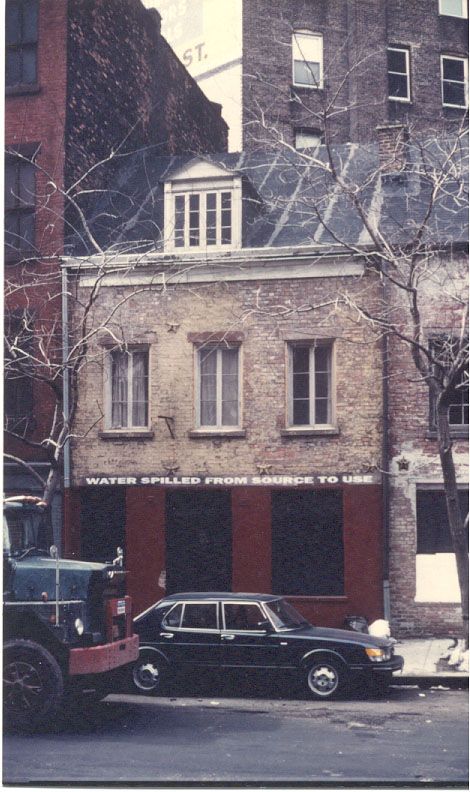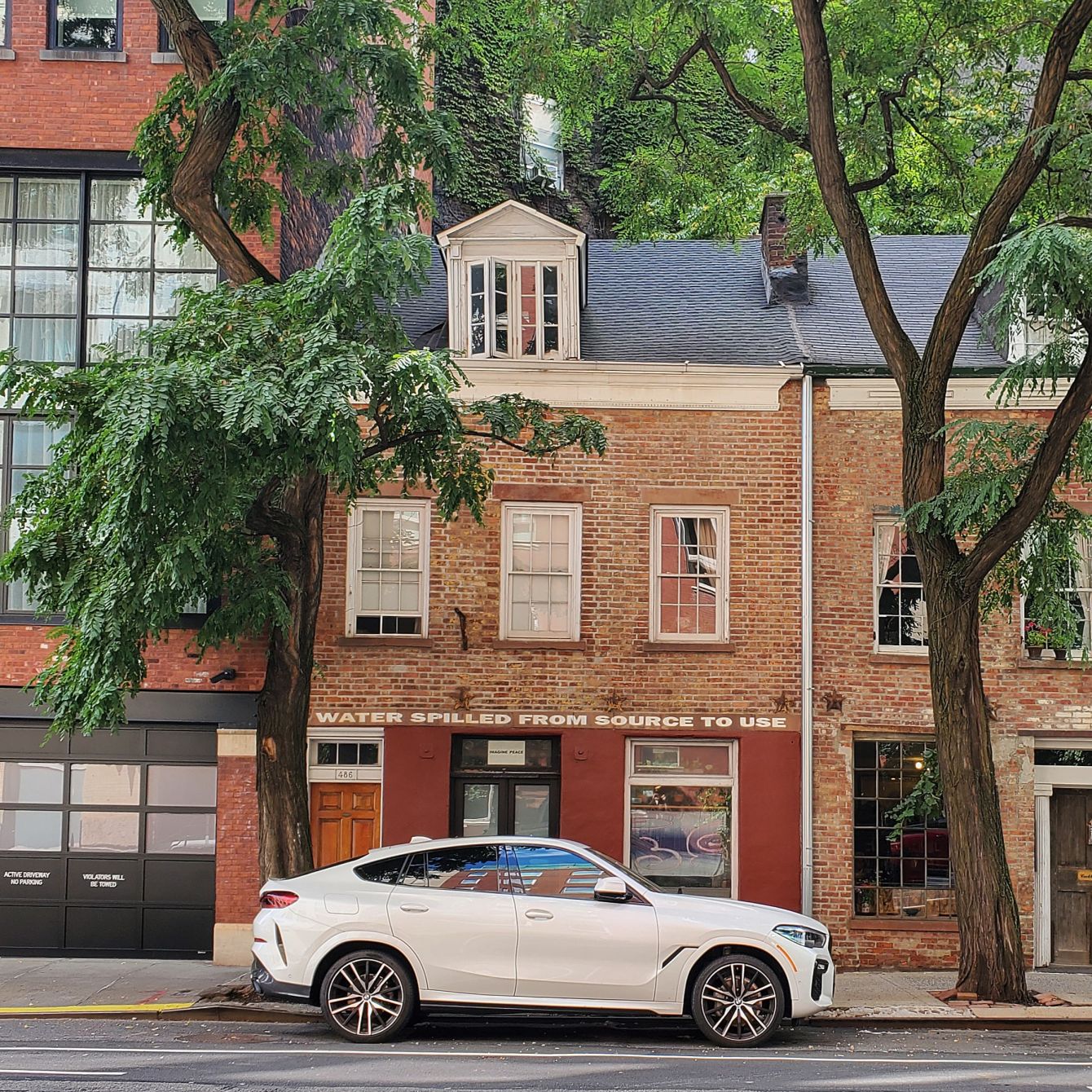
Geoffrey Hendricks, Brian Buczak & Sur Rodney (Sur) Residence & Studio
overview
From 1976 until his death in 2018, Geoffrey Hendricks, a painter and early gay performance artist central to Fluxus, lived in this rowhouse with his two long-term partners, first with painter Brian Buczak until his AIDS-related death in 1987, then from 1995 with Black writer, archivist, and curator Sur Rodney (Sur).
Hendricks and Buczak restored the building, transforming it into their home, studio, and headquarters for their artists’ press, Money for Food Press. Later, Hendricks and Sur joined in their commitment to preserving the artistic legacies of those lost to AIDS with the Visual AIDS Archive Project.
History
Geoffrey Hendricks (1931-2018) moved to New York in 1953 and, while teaching at Rutgers University from 1956 until retiring as professor emeritus in 2003, became a central figure in Fluxus, the anti-art movement inspired by experimental composer John Cage. Hendricks’s oeuvre spanned landscape paintings exhibiting his admiration for nature and painter Marsden Hartley; a prolific collection of sky paintings—on canvases, clothes, furniture, vehicles, and his body—for which Fluxus artist Dick Higgins nicknamed him Cloudsmith; found object assemblages; and conceptual performances.
Although Hendricks recognized his homosexuality in adolescence, he didn’t live as an openly gay man until after he and his wife, Nye Ffarrabas, staged Fluxdivorce (1971) at their 331 West 20th Street rowhouse to mark the end of their ten-year marriage and the beginning of their queer lives. Following this transformative event, Hendricks moved to 311 Church Street with his partner and collaborator, genderqueer performance artist Stephen Varble.
By 1976, Hendricks had broken up with Varble and moved into the upstairs of a gutted Federal style rowhouse at 486 Greenwich Street, one of a pair that Hendricks’s brother, artist Jon Hendricks, purchased in 1975 (he transferred the house to Geoffrey in 1983). That autumn, Hendricks attended a “Libra Party” at composer Phill Niblock’s Centre Street loft and met Brian Buczak (1954–1987), an artist from Detroit who had recently moved to New York. He lived in a loft at 41 Bleecker Street (Taylor Mead lived upstairs) with his art school friend Doug Kenney.
After moving into the Greenwich Street house with Hendricks in 1977, Buczak immediately became “engaged in its reconstruction and immersed in the history of the time it was built.” Sleeping amidst the construction (in a tent during the winter), they gradually restored the house. For Buczak, Hendricks said, “collecting, painting, image making, house restoration all fused.” Buczak scoured dumpsters and antique stores for furniture, decor, cookware, and other artifacts from the period of the house; designed moldings and archways; and painted a room based on a 19th-century painting by Jacob Maentel, personalizing it with a handmade stencil of a leaf from the locust tree that Hendricks planted in front.
The house served as a hub for their creative endeavors. They used the attic and an alcove on the ground floor as workspace and headquarters for Money for Food Press, which they established in 1977 to publish zines, postcards, books documenting their performances, and a scrapbook gifted by Ray Johnson, with whom Buczak was involved in correspondence art since high school. The house also informed their work: Hendricks incorporated slate tiles from the roof in some exhibitions and, he recalled, “parties and meals in the house were…like modified Fluxus banquets.”
As a painter, Buczak took visual inspiration from multifarious sources: SoHo loading docks, gay pornography, 19th-century advertisements, illustrations from vintage textbooks and Henry James novels, and Jasper Johns’s flag paintings. However, from his hospitalization and AIDS diagnosis in 1986 until his death in 1987, Buczak entered a prolific year of painting that focused on confronting AIDS and death.
To commemorate Buczak, Hendricks curated A Memorial Exhibition (1987) and commissioned Philip Glass to compose String Quartet No. 4. Hendricks also joined the board of the Visual AIDS Archive Project, established in 1994 by Frank Moore and David Hirsh to preserve the work and legacies of artists with AIDS. Through the Archive, Hendricks met and began dating board member Sur Rodney (Sur) (b. 1954).
Sur had moved to New York in 1976 and began curating exhibitions at Hansen Galleries (owned by Fluxus artist Al Hansen’s brother) featuring Gerard Malanga, Jimmy DeSana, and others “with a punk, queer sensibility.” He also joined the Blackheart Collective and hosted talk shows, broadcast on Manhattan cable television and screened at Mudd Club, in which he interviewed downtown luminaries like Holly Woodlawn. Sur became best known, however, for co-directing seminal East Village gallery Gracie Mansion from 1982 until leaving in 1988 to become a caretaker and executor to artists with AIDS, including his partner Andreas Senser. Through this work, Sur got involved in the Archive and, with Hendricks, co-curated multiple exhibits featuring the work of their late partners and other artists served by the Archive, including Copy Berg, David Nelson, David Wojnarowicz, Eric Rhein, John Eric Broaddus, Martin Wong, Paul Thek, Robert Farber, and Steed Taylor.
In 1995, Hendricks and Sur staged Wedding Event at Judson Memorial Church, influenced by previous weddings that Hendricks had officiated, including Fluxprocession (1993) for Ingrid Nyeboe and Jill Johnston. Since 1995, Sur habitually traveled between the East Village co-op that he bought in 1981 and 486 Greenwich Street, where he had meals and spent nights with Hendricks, also caring for him as he battled cancer later in life.
Following Hendricks’s death in 2018, Sur returned to living at his co-op, and the Greenwich Street house was retained as a processing and storage archive for Hendricks and Buczak, including a Fluxus library on the second floor.
Entry by Ethan Brown, project consultant (August 2023).
NOTE: Names above in bold indicate LGBT people.
Building Information
- Architect or Builder: John Rohr (attributed)
- Year Built: c. 1823
Sources
David Getsy, “The Spectacle of Privacy: Geoffrey Hendricks’s Ring Piece and the Ambivalence of Queer Visibility,” The Art Bulletin (August 2022), 117-145.
Ethan Shoshan and Sur Rodney (Sur), email with Ethan Brown, July 2023.
Ethan Shoshan, “More Than a Jar of Pennies: In Loving Memory of Geoffrey Hendricks and Brian Buczak, 2018,” Visual AIDS, July 1, 2018 (accessed July 14, 2023) bit.ly/3O7Aat3.
Geoffrey Hendricks, interview with David Hirsh for the Archive Project of Visual AIDS, bit.ly/46XXEs9.
Geoffrey Hendricks, “Life, Death, and Independence: Reflections on Brian Buczak,” Brian Buczak: A Memorial Exhibition (New York: Money for Food Press, 1989).
“In Memoriam: Geoffrey Hendricks,” The Visual AIDS Blog, June 7, 2018 (accessed July 14, 2023) bit.ly/3PQawum.
Jay Shockley, 486 Greenwich Street House Designation Report (New York: Landmarks Preservation Commission, 2007).
Neil Genzlinger, “Geoffrey Hendricks, 86, Attention-Getting Fluxus Artist, Dies,” The New York Times, May 22, 2018, nyti.ms/3NMePnQ.
Oral history interview with Sur Rodney (Sur), July 12 and 15, 2016, Archives of American Art, Smithsonian Institution, s.si.edu/3DbnPOh.
Oral history interview with Geoffrey Hendricks, August 17-18, 2016, Archives of American Art, Smithsonian Institution, s.si.edu/3PY4Xdl.
Sur Rodney (Sur), “Geoffrey Hendricks (1931-2018),” Artforum International (accessed June 5, 2018, bit.ly/3Qg6USn.
Tim Murphy, “Sur Rodney (Sur)’s 40+ Years of Caring for Artists and Their Work,” The Caftan Chronicles (accessed July 23, 2023) bit.ly/43zPZNL.
Do you have more information about this site?
This project is enriched by your participation! Do you have your own images of this site? Or a story to share? Would you like to suggest a different historic site?
